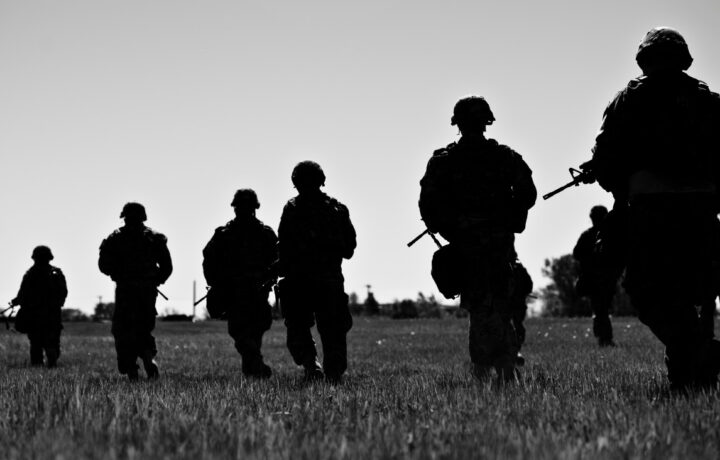United States Secretary of Defense Pete Hegseth has called for a transformation of the U.S. military that would return it to its core “warfighting” objectives. However, Hegseth is far from alone in this line of thinking.
As reported last year, United States Air Force and Space Force recruits were issued a “training version” of the U.S. military’s M4 carbine when they arrived for Basic Military Training at Joint Base San Antonio-Lackland, TX. As of July 2024, recruits received an “inert” version of the standard issue rifle carried by most American warfighters following their initial week of weapons familiarization.
Those firearms were fitted with a red flash suppressor to indicate the inert status. U.S. Air Force trainees hadn’t carried firearms daily during training since the practice was halted in 2012. However, the 737th Training Group, which oversees Basic Military Training for the air and space services, sought to stress the importance of instilling a “warfighter mindset” in the recruits.
“Incorporating practice weapons into realistic scenarios in a controlled environment builds confidence, corrects errors, and manages stress by providing regular practice that reduces hesitation and increases combat effectiveness,” explained Col. Billy Wilson Jr., commander of the 737th Training Group, who reinstituted the program.
Chief Master Sergeant of the Air Force Dave Flosi, the Air Force’s senior NCO, said in a round table at the Air and Space Forces Association’s Air, Space and Cyber Conference in September that he didn’t think the carrying of inert firearms went far enough. He called for airmen and guardians to carry live weapons as they completed basic training.
Keeping the Inert Firearms For Now
It has been a long-standing practice for the U.S. Army and U.S. Marine Corps recruits to carry and maintain functional rifles throughout their basic training, but they’re only given live ammunition when on the firing range and under close supervision. That hasn’t been the case for the U.S. Navy and the U.S. Air Force, and it isn’t likely to change for the Air Force or Space Force.
“Right now, we don’t see much benefit to [issuing] live weapons [to recruits],” Maj. Gen. Wolf Davidson, commander of the Second Air Force, told Air & Space Forces Magazine last week. “We will continue to evaluate, but in the near term, we are not going to transition to real M4s.”
Supporters of seeing recruits carry live firearms have argued that it instills a warfighting mentality, but it presents additional challenges, including ensuring that the rifles would be secured, with armed guards protecting them.
It is also important to note that after basic training, most military personnel are not even allowed to carry firearms on military bases, as the facilities are federal property, and the Gun Control Act of 1968 prohibits firearms on federal property with a few exceptions. Base law enforcement officers and military police are permitted to both conceal and open-carry firearms during their duties, while most others are not.
However, a DoD rule from 2016 does permit a base commander to allow troops to apply for concealed carry of personal weapons – but that only came about in the wake of mass shootings, including multiple active-shooter incidents on military installations.
For now, airmen and guardians will still be responsible for the care of their inert firearms, which could help improve the warfighting mentality without some of the responsibility that may come with maintaining live weapons.




